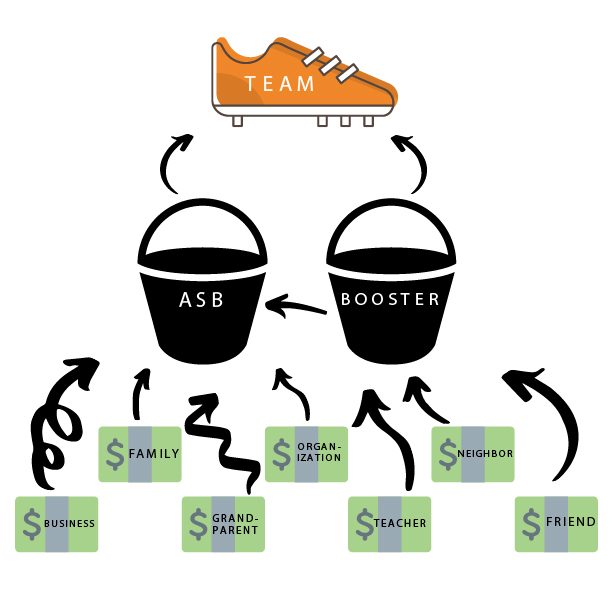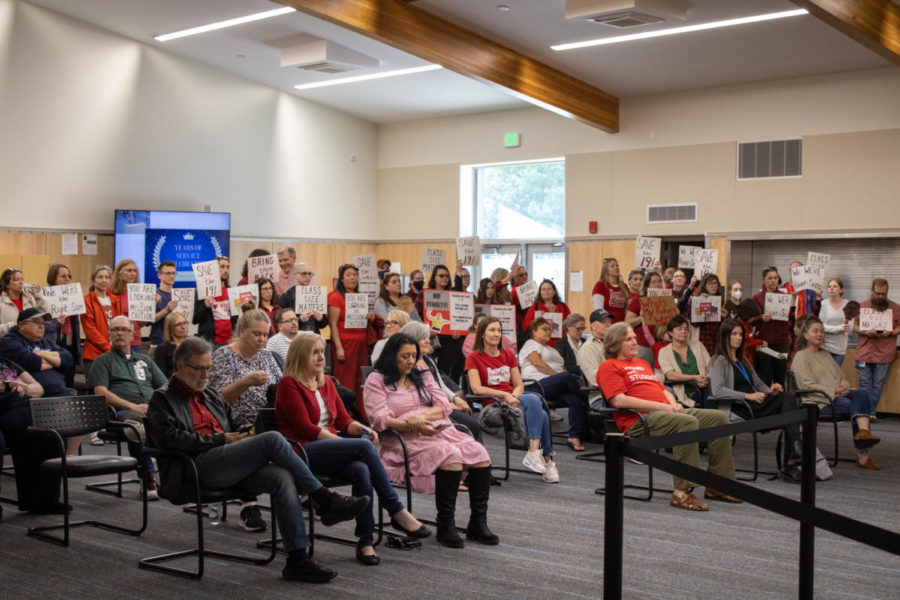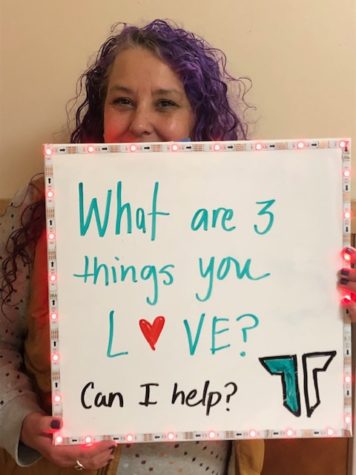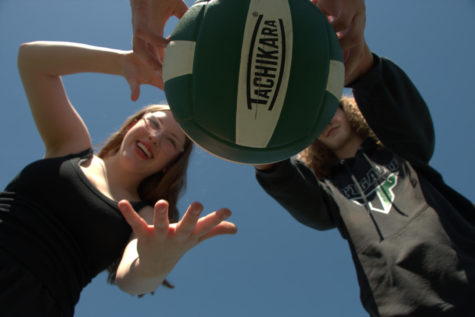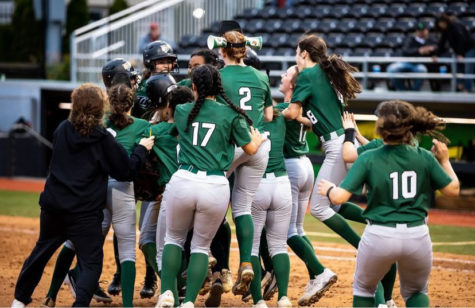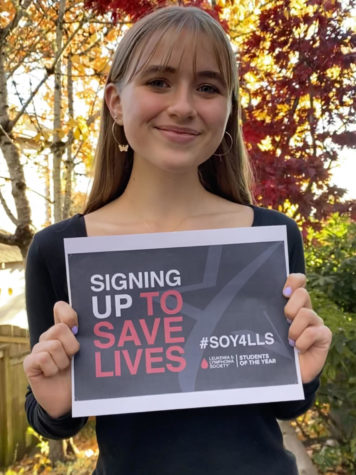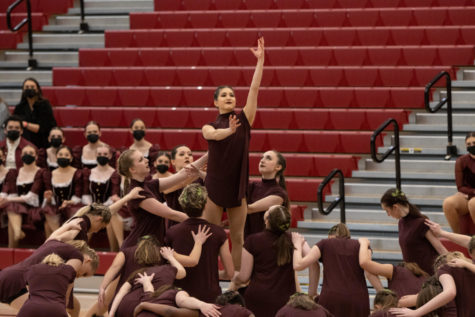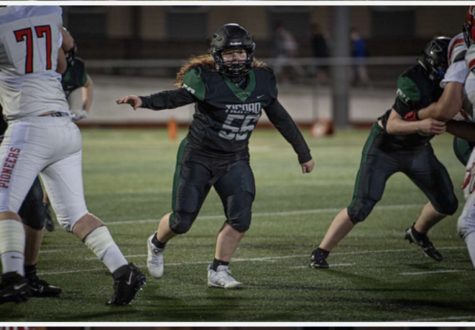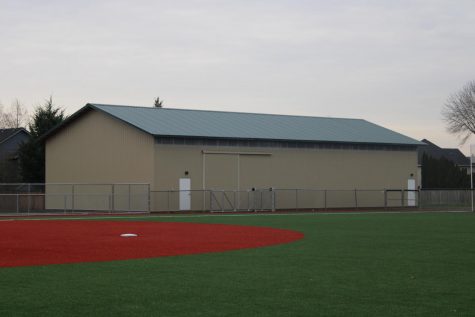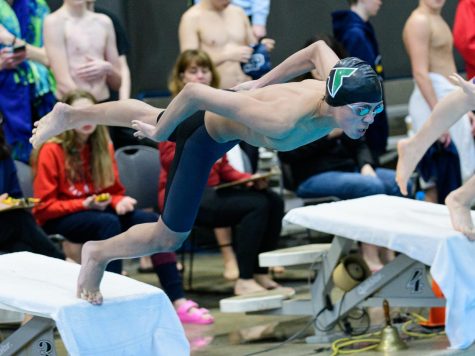Accounting for Athletics
Find out more about our sports and what it really costs to play a school sport.
Find out how money makes its way from the community and families through the separate accounts to eventually benefit the team.
December 4, 2019
Story originally published in the 2019 edition of The Paw, our quarterly magazine.
Playing a sport at Tigard is expensive.
For baseball players on top of the pay-to-play fee of $225 are the personal costs of cleats, a glove, a bat, a batting helmet. Then add in the team uniform of $125.
To pay for field maintenance, equipment and extra coaches stipends, the team holds two fundraisers. Players must acquire $200 in pledges for the 100 inning game and sell $250 in coupon book cards. The costs some families are responsible for can be close to $1000.
Baseball is not unusual. The costs are similar for other sports as well. Varsity volleyball comes in at around $1300.
“The pay-to-play fees are the funds which go directly to the district,” bookkeeper Carrie Bayha said.
These funds do not cover uniforms or anything extra that the program may need or want.
They help to cover the busses for away games and officials, as well as the head coach’s salary, according to Principal Brian Bailey.
“The pay-to-play fees barely covers the logistics to operate and cover the athletic programs,” Bailey said.
Therefore, teams are left having to cover many of the costs themselves, like paying for assistant coaches, purchasing new uniforms, Gatorade, protein shakes and gear that is specific for each team.
Every sport is different–some have booster clubs, some have ASB accounts, some have both–but both types of accounts are typically funded by family-led fundraisers.
The money raised by a sport doesn’t necessarily end up in one, single account, which can make things confusing for players and families. There are different rules that apply depending on which account is being used. For example, according to district policy, ASB fundraisers must adhere to district guidelines surrounding nutrition and must be pre-approved by the principal. Booster fundraisers, on the other hand, don’t have to be approved by the district at all.
The pay-to-play fees barely cover the logistics to operate and cover the athletic programs. — Principal Brian Bailey
Some teams are not upfront about which type of account the fundraiser is going into. This lack of communication causes confusion among the athletes and their families. This past summer there was some controversy with the baseball program accounts that led to the head coach and assistant coach stepping down.
“Some programs do a good job of being very specific and some programs can do a little bit better job of that in the future,” Bailey said.
“Each month the school bookkeeper reconciles the ASB accounts with the bank, and then the bookkeeper and school principal verify that each club or team has a positive balance in their ASB account at the end of each month,” Controller Elizabeth Michels said.
While it would be instructive to see which teams use their ASB accounts and how the money comes in and out of them, The Paw is still waiting to receive this information. The Paw made a records request on Sept. 18 to obtain the account information for a handful of ASB accounts–baseball, football, soccer, basketball, volleyball and softball. At first, the district business office explained that it would take time to return an estimate, then they provided an estimate and waived the fee, but as of Nov. 11, the records have not been given to The Paw.
Not all teams use their ASB accounts; some sports teams use booster accounts to help with fundraising. The booster clubs are independent groups that support teams. The boosters, either parents of students or community members, have their own board where they make decisions regarding how money is spent and how much money is then turned over into the ASB accounts.
“The board of the outside group is responsible for the decisions while they hold the money,” Michels said. “Once any funds are turned over to the district, including money put directly into the ASB accounts, district policies apply.”
The booster that our athletic department works with is the Tigard High School Boosters Club. They encompass all of the athletics and are responsible for dividing up funds for all of the athletic programs at Tigard.
“From club sports to the OSAA sanctioned sports, they have developed a formula to determine how much money each sport gets,” Athletic Director Alan Boschma said.
Part of that formula takes into account how much each team needs along with the amount of players on the team. They also try to help supply our athletic trainer with basic supplies.
For band, the boosters have to find ways to help fundraise to cover the costs of operating a winning program. The band boosters are a separate legal entity that also file their own taxes and exist solely to raise funds for the THS Band program. Since the district can’t fund the marching program due to the expenses surrounding it along with the need for specialized coaches, they get their money through the boosters.
“The only way the money can be used is for band; the instructors’ contracts are with the band boosters, and they are cleared through the school volunteer program,” Band director Kati McKee said.
Band does have an ASB account that they use to cover small expenses, like buying music, but their major fundraisers operate through the boosters.
The booster accounts are all separate of the district, filing their own taxes; they are established outside of the school to prevent any crossover between funds.
Currently the athletic department does not keep track of what booster accounts exist because they are separate entities from the school. The school would not definitively be able to say if a booster club for a sport really existed or not.
If other accounts existed–beyond boosters or ASB– there would be no oversight as to how the funds in those accounts were administered, but coaches are forbidden from opening their own accounts for sports.


